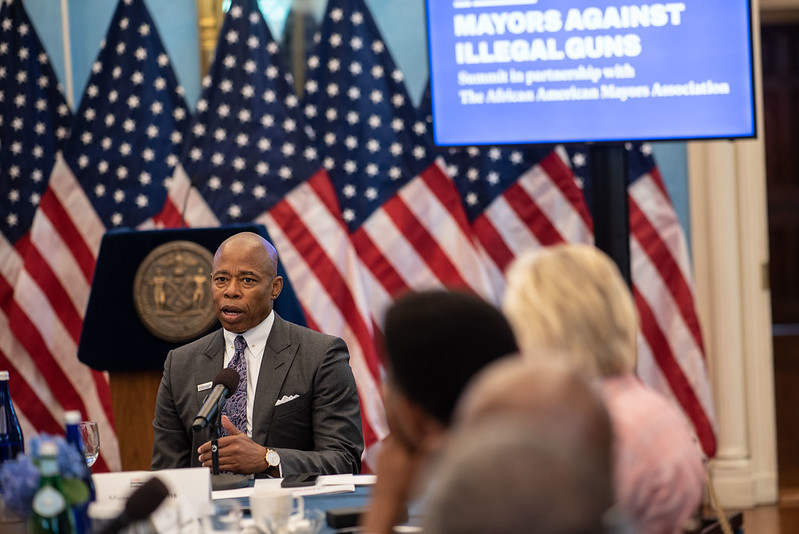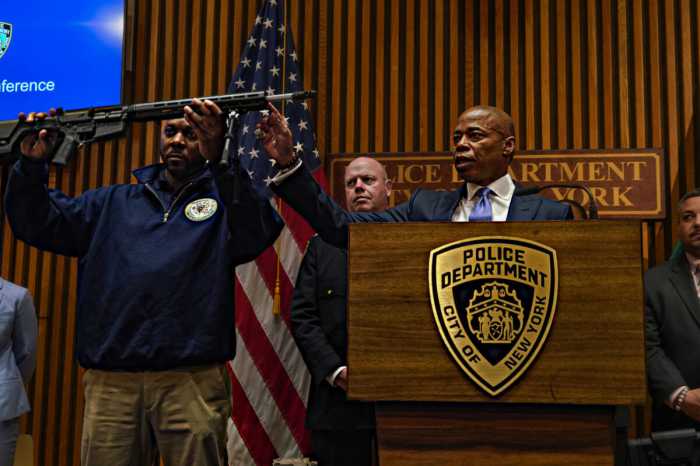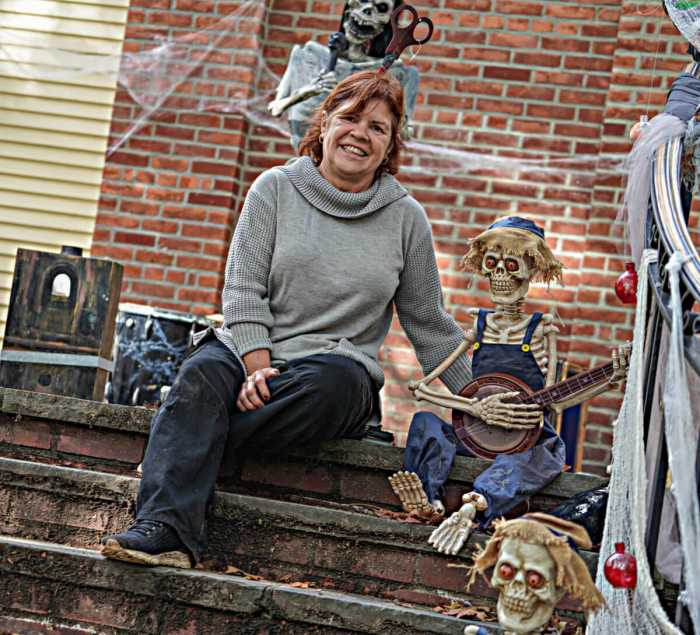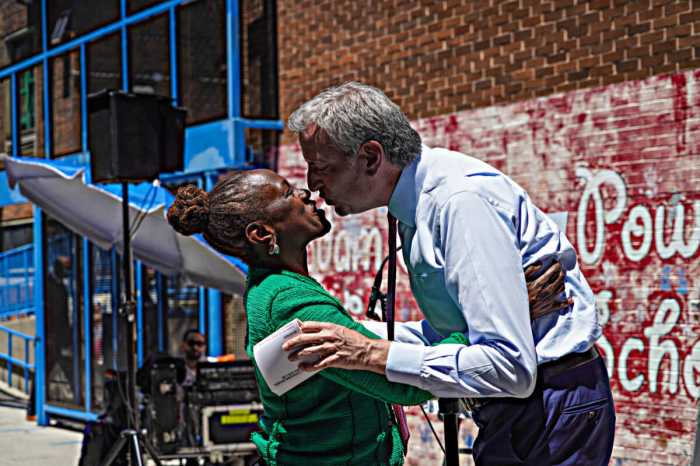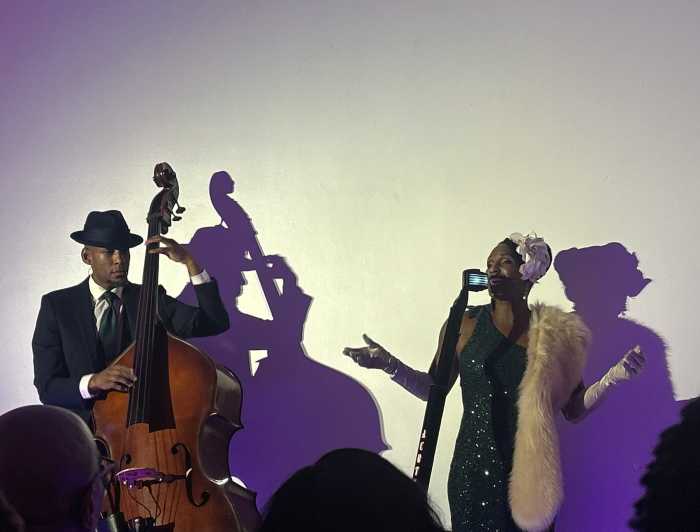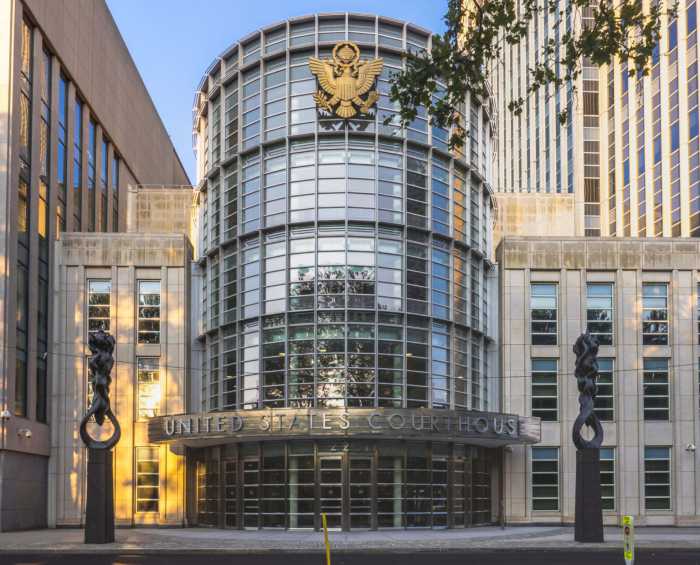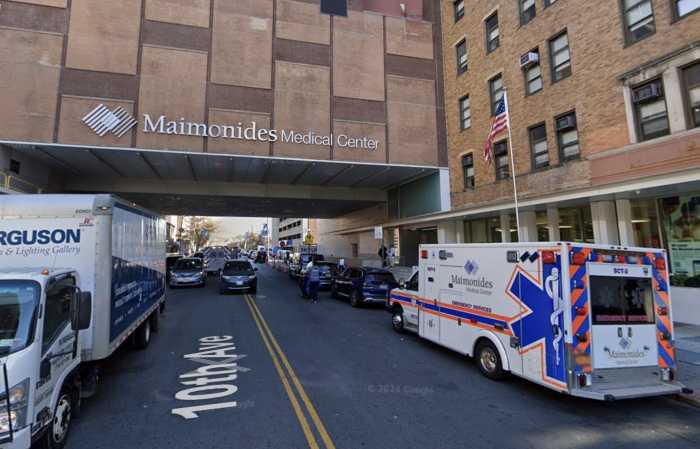Over 15 mayors from around the country met with Mayor Eric Adams inside Gracie Mansion Wednesday to discuss how to tackle the pervasive issue of gun violence plaguing metropolitan areas from New York City to Little Rock, Arkansas.
“Today, mayors came together with the energy of collaboration, coordination and mobilization,” Adams said. “We want clear plans and steps to dam each one of the many rivers that are feeding the gun violence in our cities. It didn’t matter if you were from a southern state or northern state, the West Coast or East Coast, there was the same issue facing us: too many guns in the hands of too many people carrying out dangerous actions in our cities. All of us can exchange stories of speaking with family members and loved ones.”
Adams was joined by Little Rock, Arkansas Mayor Frank Scott Jr., Mount Vernon Mayor Shawyn Patterson-Howard, Kansas City, Missouri Mayor Quinton Lucas and Baltimore Mayor Brandon Scott. Also joining the mayors were Adams’ chief counsel Brendan McGuire and Senior Vice President for Law & Policy at Everytown for Gun Safety Nicholas Suplina.
Adams and his fellow mayor’s came up with several actions they could take together to help stem the tide of gun play in city streets, he said. These include cracking down on social media companies and “billion-dollar” gun manufacturers like Glock, Taurus and Polymer80.
In his remarks, Adams compared taking on gun manufacturers to the crack-down on big tobacco companies in the 1990s.
“They’re no different than the cigarette manufacturers of yesteryears,” Adams said. “Who, year after year, knowing their product produced a dangerous outcome, continued to lie and hide behind the facts. We are not going to allow that to happen anymore.”
One strategy the mayors considered for taking on gun manufacturers, Adams said, is better regulating the way they’re advertising the firearms they sell and who those advertisements are directed towards. As an example of what advertising strategies gun manufacturers shouldn’t be using, Adams said for Valentine’s Day one company used an advertisement that alluded to using a gun to commit domestic violence.
“When you have a product, you have a sales and marketing team, and how do you sell that product?” Adams said. “Do you focus on young people? Do you focus on particular groups? Do you focus on people who have mental health illnesses? So, we’re looking at: how were you selling your product? What is your focus group? Because as in any product, you look to see: who are you going to sell that product to?”
Adams also floated the idea of pushing gun manufacturers to produce firearms that can be disabled remotely – similar to how smartphones can be disabled when they’re stolen.
Additionally, Lucas said, gun manufacturers are currently violating several regulations, which is the subject of lawsuits brought by cities including New York and Kansas City. These include complying with federal regulations like properly selling, reporting sales and conducting background checks. Another is making sure firearms are distributed to responsible sellers.
The best way to achieve more accountability among gun manufacturers, Lucas said, is for mayors from various cities to join together and push for change with a unified voice.
“How can we work in concert?” Lucas said. “How can we make sure that there is great pressure on the industry coming not just from a few cities, but from all of us saying that enough is enough?”
The mayors also discussed ways to better share information on guns seized during crimes between cities, Adams said – something the U.S. Bureau of Alcohol, Tobacco, Firearms and Explosives (ATF) has prevented for many years. But if cities enter into an information sharing agreement, they can set up a database of guns they’ve seized.
“By having that information sharing, we can trace that gun,” Adams said. “We can trace the person who purchased that gun to see if there was a history of him or her purchasing guns, how we can get how it arrived on our streets. That information sharing is crucial. It allows us to get ahead of the problem. And by having a centralized database of showing: where did the shooting happen? Who purchased that gun? Where was the gun stolen from? How many other shootings that gun was involved in? And what cities or states was it involved in? This is a major new weapon that we are going to use in dealing with gun violence.”


